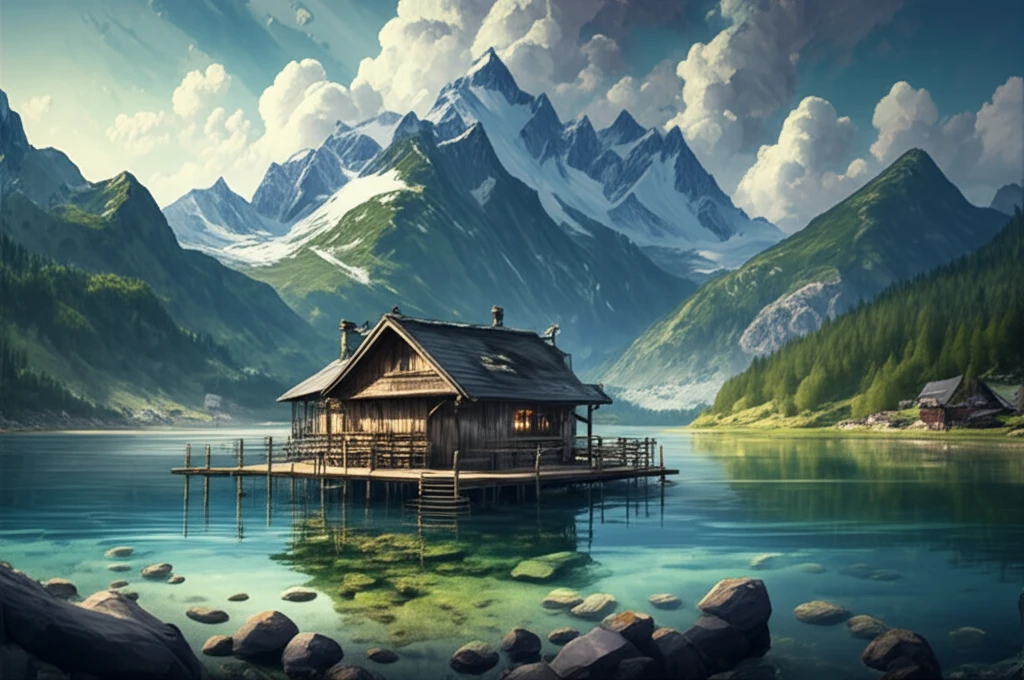
Lake-Dwellings in the Alpine Region: Uncovering the Secrets of Prehistoric Waterfront Life
"Delve into the fascinating world of prehistoric lake-dwelling communities in the Alpine region and understand how archaeology reveals the secrets of their daily lives, social structures, and environmental adaptations."
Imagine stepping back in time, thousands of years ago, to a world where communities thrived along the shores of pristine Alpine lakes. These weren't just any settlements; they were sophisticated lake dwellings, ingeniously built on stilts or platforms above the water. Thanks to remarkable preservation conditions, these sites offer an unparalleled glimpse into the lives of our prehistoric ancestors.
Since the first discovery of a prehistoric lake-shore village at Obermeilen on Lake Zurich in 1854, archaeologists have identified close to 1,000 similar sites around the Circum-Alpine region. These settlements, scattered across Switzerland, France, Germany, and Italy, represent a unique cultural phenomenon that flourished from the Neolithic period through the Bronze Age.
This article explores the captivating story of these lake dwellings, revealing how archaeological excavations, dendrochronology, and a deeper understanding of past environments are piecing together the story of these remarkable communities. Join us as we uncover the secrets of their architecture, social organization, and adaptation to the ever-changing Alpine landscape.
Why Were Alpine Lakes Chosen for Dwellings?

The choice to build homes on or near water wasn't arbitrary. While the exact reasons varied from place to place, several factors likely contributed to this unique settlement pattern. One prominent theory suggests that wetlands and lake shores offered a degree of protection from potential enemies. The watery surroundings created a natural barrier, making these settlements more difficult to attack.
- Resource Availability: Proximity to water ensured a constant supply of drinking water and facilitated fishing and hunting.
- Defense: The water acted as a natural barrier against potential invaders.
- Transportation: Lakes provided easy routes for transportation and trade.
- Fertile Land: The margins of lakes often had fertile soil suitable for agriculture.
What Can We Learn From Lake-Dwelling Communities?
The lake dwellings of the Alpine region offer a treasure trove of information about prehistoric life in Europe. By studying these sites, archaeologists gain valuable insights into the daily lives, social structures, and environmental adaptations of early farming communities. These discoveries challenge traditional views of prehistoric societies and highlight the ingenuity and resilience of our ancestors. They hold lessons about sustainable living and community resilience that resonate even today.
